Man in the Community
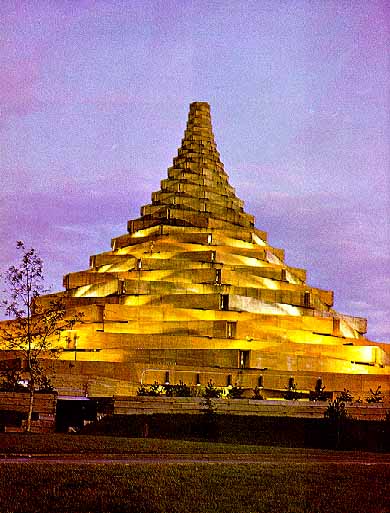
| Man and Community pavilion. |
The striking pavilion's architectural form suggested at once the power of a rocket and the elegance of a spire, a slender pyramid with trellis work of wood from the forests of Canada's Pacific Coast. When it rained, the drops fell through the open roof into a pond in the center of the pavilion. A garden extended beyond the pavilion's outer walls, round the pond and between the exhibit halls. This man build oasis, open to the sun and rain, represented urban man's greatest need. The pavilion's intention was to pose some of the questions confronting man about changing conditions within the urban environment wit an emphasis on the human community.
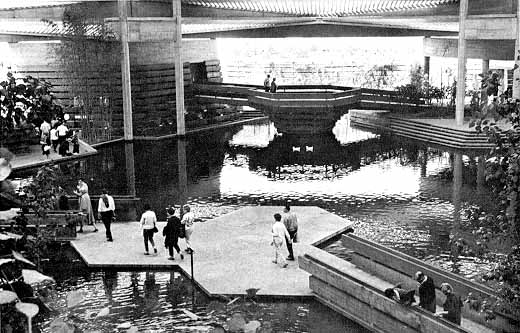
| Garden area in the Man and Community pavilion. |
Around this haven, seven rooms depicted different facets of city life. First was the brutal and jazzy psychedelia of "Citerama", a harsh kaleidoscope of urban images and sound. "The Loney Community" next showed the cages in which each citizen was trapped, segregated by prejudice, class, age, sex, and even illness. The visitor found himself caged, via a mirror, but the lesson was not an illusion.
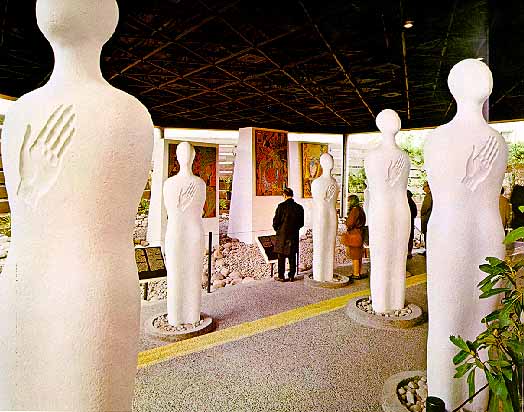 |
Senegal artist Papa ibra Tall's paintings illustrate the epic of man throwing off the yoke of colonialism. |
The exhibit "The Electronic Community" pointed to some of the dangers in the upheaval of education and the avalanche of information in the computer era. The exhibit "The Workaday Community", a tribute to man's inherent sloth of all progress, used puppets of the Czech master Jiri Trnka.
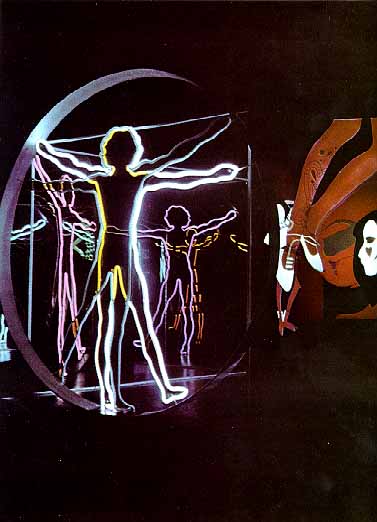 |
Neon silhouette of Da Vinci's perfect man suggested that perfection had become an artificial, empty shell. |
The second half of the pavilion concentrated on solutions rather than symptoms. "Community on the march" and "The Interdependent Community" illustrated the difficult climb by underdeveloped countries towards technological heights and the emergence of new nations with ideals of interdependence and mutual respect.
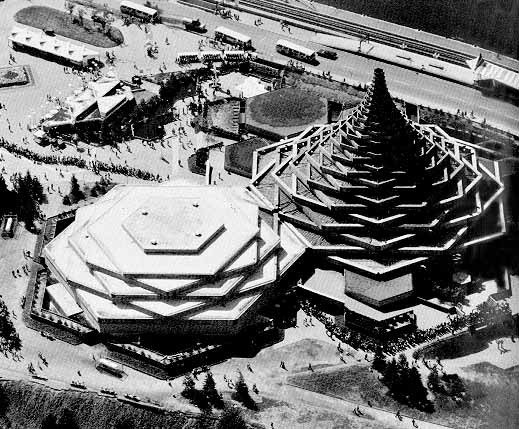 |
Aerial view of Man and Community (right) and Man and Health (left) pavilions. |
"Urbanissimo", an animated cartoon, was the finale of the pavilion. The city seduced the farmer with its irresistible charms. To urbanize was perhaps to civilize but also, alas, to alienate nature.